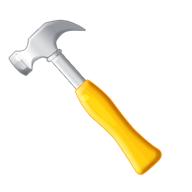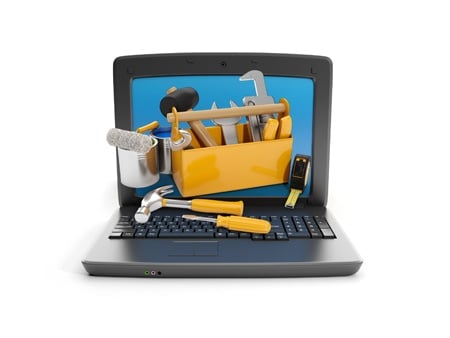Simple Tips for Adding Shop Floor Visual Work Instruction
Many times, a solution is much closer than you might think. By David Oeters, Corporate Communications with CIMx Software Face it, in an era when shop...

Trying to answer, “What is MES?” is not easy, and it’s a question I get a lot. A good MES delivers smooth operations. The information and process management available in true MES increases quality, eliminates scrap, and build products efficiently. For each part of your operation, MES has a different meaning. For the shop floor, it’s where they get work instructions and collect data. For engineering, it’s how instructions are built and a tool for ECO (Engineering Change Orders). For finance, it might be a line item, for sales and customer service it’s a way to track orders, and so on…
This is why I’ve begun connecting the role of MES to the human element in manufacturing. Confused? Here’s what I mean…

Making Sense of MES and Manufacturing Enterprise Systems
Most customers we talk to are confused about the boundaries between MES, ERP, scheduling and a host of other products driving the engine of their business. In digital business tools, an ERP or MRP is focused on the business and finance of your business, while the MES focuses on people – helping them work better, smarter and faster.
Your workplace is teeming with the human element right now. Employees are designing, planning, building, testing and shipping your products every day. If you’re in the services industry, your product is your people.
The human element can be amazingly powerful and scary all at the same time. Machines aren’t as creative as humans, but a machine can reliably repeat the exact same motion long after a human arm has tired. Humans aren’t as durable as a shop floor machine, but when disaster strikes, I trust a human to think through the next steps.
Take a closer look at a manufacturing business. Inside the business, you have HR, finance, customer support and other operational areas. The central tool to manage these aspects of your business is the ERP software. The ERP connects these areas, manages the information and provides a communication flow. It is a big task, which is why ERP installations are typically long and complex, but should result in a well-running support system. It is a transaction-based system.
Manufacturing Enterprise Process Control
Let’s examine this further. An order from the Acme Co. comes in for 10 green widgets due a week from Tuesday. The order is entered into the ERP which stores the information and notifies engineering and the shop floor of the order. The ERP is very good at managing a transaction-based operation such as this.
In engineering another set of tools come into play. Engineering uses CAD systems, drawing and specification tools, and spreadsheets to produce the documentation necessary for green widgets. This includes detailed instructions for how to build the widget, any relevant measurements to be made during production to ensure the widget meets specifications, drawings, blueprints, photographs, safety sheets and all other files related to the part. One useful tool you often find here is a PDM (product data management) system to organize engineering documents and ensure only the latest version of a document is available.
An ERP manages transactions, and a PDM organizes documents, but neither creates the process-focused operation necessary to create a work package for the shop floor. This is the human element we mentioned at the beginning that is the focus of an MES, helping manage human and operational elements on the shop floor to ensure you have the most efficient-built green widgets for the Acme Co., and Acme has the quality assurance and as-built records they need for their completed order.
Production control receives the order from the ERP and needs to match it with the documentation from engineering. The MES completes this function, where the ERP cannot. With just a PDM or an ERP, you end up contorting a transaction tool or document management system to twist a myriad of MS Word and Excel documents into a process, which leads to the poor humans on the shop floor reading and re-reading documents, trouble-shooting, searching for answers when they should be building. Data collection gets lost in the ERP transactions or the PDM, if it is collected at all.
Adding MES to Your Manufacturing Enterprise
MES adds the human element to your digital manufacturing tools. You have widgets you need to build. You have machines to do it. MES tells the people what to do at each machine in order to build the widgets correctly. Without it, the people on the shop floor have to make independent decisions based on disparate knowledge about production, or they rely on tribal knowledge that is never adequately collected.
Sometimes this works, but since there is no process control, you can’t guarantee it will work every time. It’s an unreliable and very expensive way to manufacture.
MES provides a toolkit connecting other business systems to manufacturing, ensuring your team produces to the highest quality tolerances and with the highest productivity. Ultimately, it has the biggest direct impact of any system on the profit for the business. In manufacturing, an MES is the basic building block upon which profit is built because it is focused on process-based manufacturing operations that drive the business.
When someone asks me what an MES is, I could recite a litany of acronyms, starting with ANSI/ISA-95 standards, toss in a PRM note and sprinkle in OEE or LEAN with a healthy dose of tech speak… or I could talk about the human element that is so critical for manufacturing success. You don’t purchase an ERP to build a car, and you don’t hire machines to fix a problem. You hire the best people for your shop floor and give them to the tools they need to succeed, and that’s where an MES comes in.

Many times, a solution is much closer than you might think. By David Oeters, Corporate Communications with CIMx Software Face it, in an era when shop...

1 min read
Most manufacturers know quality and efficiency would suffer if they asked their shop floor to use the wrong tool, but all too often that’s what...

The key to increasing productivity isn’t always a new machine or process, it can be as simple as an adjustment to your work instructions. By David...